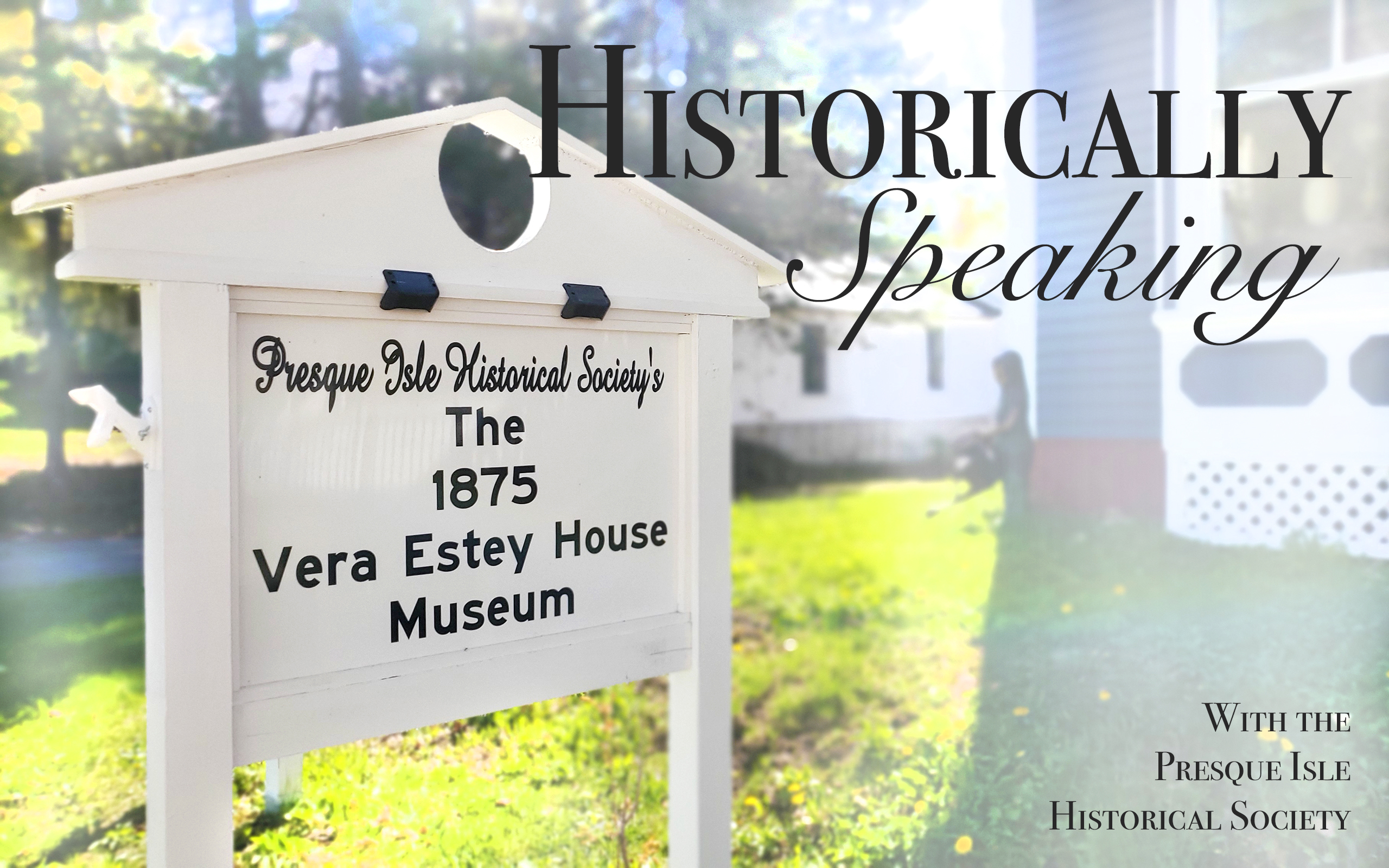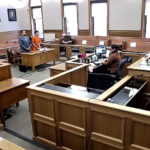Presque Isle has always had, since its early inception, some form of medical care. whether it be through visiting doctors or in private homes. By the late 1800s, Presque Isle had two private hospitals.
Ethel Connick (Mrs. Milton), RN, ran a small hospital out of her home on Dudley Street with four to five patient rooms and a room set aside for surgery. The second facility was run by Mrs. Charlotte Fitzgerald on Third Street with a four-bed women’s ward and a four-bed men’s ward as well as a room for surgery.
Local attorney Frank White came up with the idea of a charitable hospital in 1908 and began seeking donations from residents, neighboring towns and area farmers. In 1909, local farmer Charles Hussey had a very ill six-year old. The child suffered from a prolonged ear infection and had two mastoid operations. The child had to undergo a third operation and was one of only seven children to be treated in the State of Maine to recover. Following his son’s recovery, Charles Hussey became a big proponent of the hospital and assisted Frank White in raising $2,500.
In 1911, that $2,500 was used to purchase a partially-completed house on Second Street from Milton Hicks to be used as the first public hospital. The wooden house was white and three stories in height. It was enlarged to accommodate 16 to 20 patients.
Once enlarged, the house had a large laundry room and used steam heating. The first floor had two private rooms and a seven-bed ward. On the second floor, there were six private rooms, a multiple bed ward, an operating room, and a room in which to administer ether. The third floor consisted of rooms for the superintendent, nurses, and a housekeeper.
The Presque Isle General Hospital was officially incorporated on April 8, 1912. The corporation’s mission was to provide medical care for the residents of Presque Isle and the surrounding area, and to also maintain a training school for nurses.
The first manager was Frank White. The first superintendent of nurses was Minnie (Tribou) Hemphill, who was paid an annual salary of $500. The original physicians providing care at the hospital were: Drs. Frank Kilburn, Sherman Boone, Fred Bennett and Eugene Doble.
A report was published for the hospital’s first 20 months in business encompassing April 12, 1912, through December 31, 1913. The report indicated that in its first year, the hospital’s revenue was $238.65 and expenses were $291.81. During its second year, revenue was $695.00 and expenses $682.73. During that time, 359 patients were treated, of which 305 were surgeries. The average length of stay was 10 days.
With the population still growing, the needs for hospital care grew accordingly. It soon became necessary to either expand the existing hospital or build a new facility. In March of 1917, the property next door owned by C.H. Smith was purchased. The hospital board voted on June 18, 1919, to build a new brick hospital on that site. A capital campaign to raise $40,000 was undertaken. The funds were much easier to raise this time due to the community’s impression of the first hospital.
In 1919, construction on the new brick hospital building was begun. The structure completed in late 1920 had 32 patient rooms and accommodated 50 patients. A formal dedication of the new hospital facility took place on January 7, 1921. This new hospital facility (which is our current City Hall) contained a lab; x-ray room; kitchen; dining rooms; what we would today call an emergency room; wards for men, women and children; offices; 14 private rooms; two semi-private rooms; maternity ward; and staff areas. Each floor had a nurses’ station with a call system and a medicine cabinet. The building also had an elevator. Furniture was provided for the children’s ward, nursery, and private rooms through donations from local churches, residents, and charitable organizations.
Many of us know first-hand just how expensive hospital stays are today. In 1920, the daily rate for a hospital room was $4.50 if the room had just one window, or $5.00 if it had two.
In addition to physicians, RNs, student nurses, a manager, and a superintendent, the hospital also had a dietician, assistant superintendent of nursing, operating room supervisor, night supervisor, x-ray and laboratory technicians, and a bookkeeper.
Nurses worked 12 hour shifts until the 1940s when this changed to 8 hour shifts. Operating room personnel were on 24-hour call and did not receive overtime pay. During years of financial difficulty, medical staff provided ward work for free, and the town paid their employees in script redeemable at local stores.
By the 1950s, overcrowding was a huge issue at the hospital. With $1.2 million to raise, a six-week pledge drive was undertaken which resulted in pledges of $660,000. These pledges included a $100,000 contribution from Mr. and Mrs. WH Wildes of Texas. Mrs. Wildes was the daughter of Arthur R. Gould, the only United States Senator to come from Aroostook County. Matching funds of $693,000 came from the Hill-Burton Act, and the sale of the building on Second Street brought in an additional $160,000.
The 30-acre Deeves farm owned on the eastern end of Academy Street was chosen as the site for the new facility, today’s Northern Light AR Gould. The completed 80-bed facility was dedicated on Jan. 9, 1960. Thirty-seven patients were moved from the Second Street location on Feb. 16, 1960. A woman in labor delivered shortly after arrival at the new facility.
The new hospital cost $1,565,000, of which $600,828 was contributed by the general public.








